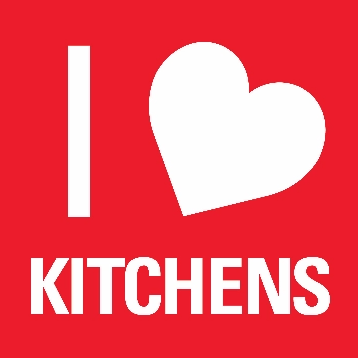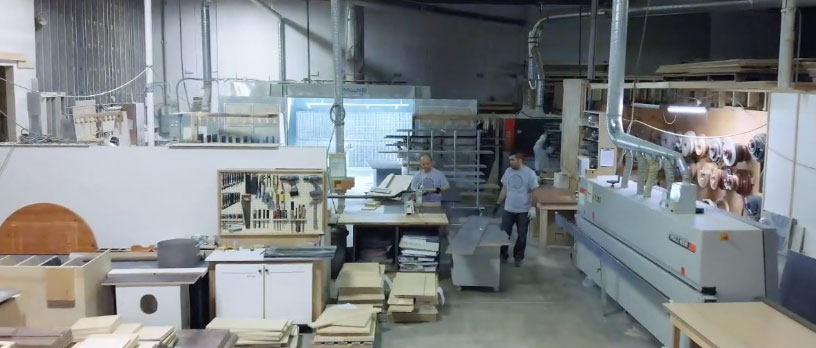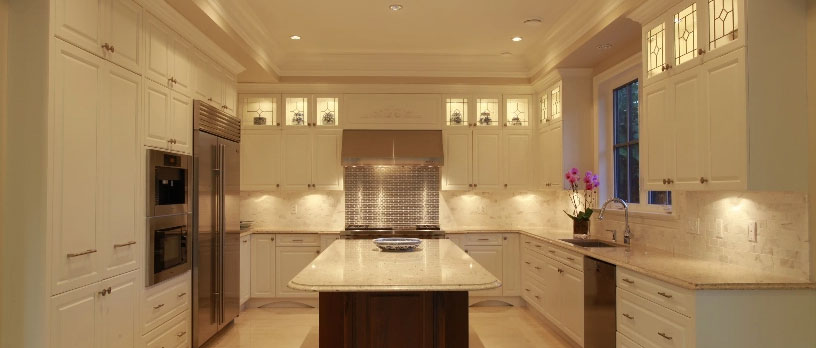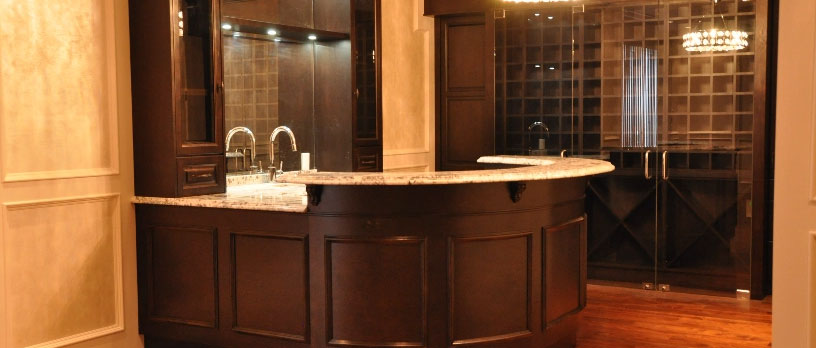Introduction to Industrial Kitchen Design
Industrial kitchen design encompasses the planning and layout of kitchen spaces primarily in commercial settings such as restaurants, hotels, and catering facilities. The core objective of this design is to optimize the environment for high efficiency, safety, and functionality. These kitchens are built to handle large volumes of food production while minimizing the time and effort required to perform culinary tasks. Understanding the intricacies of industrial kitchen design is crucial for anyone involved in the culinary industry, as it directly impacts food quality, service speed, employee satisfaction, and overall business profitability.
Purpose of Design Efficiency
In the context of industrial kitchen design, efficiency is paramount. An efficiently designed kitchen allows for smooth workflow and operations, which is essential in commercial cooking environments. Efficient kitchens can drastically reduce energy usage and food waste, thereby lowering operating costs. Moreover, a well-thought-out design is critical for maintaining food safety standards and ensuring that kitchen staff can work effectively without unnecessary delays or hazards, thus enhancing overall productivity.
Key Principles of Efficient Industrial Kitchen Layout
When it comes to maximizing efficiency in industrial kitchen design, several foundational principles must be considered. These design principles are geared towards creating a seamless flow of operations, reducing labor intensity, and improving service delivery in commercial kitchens.
Work Triangle Concept
The work triangle is a time-tested principle in kitchen design, especially pivotal in industrial settings. It refers to the spatial relationship between the three main work areas in the kitchen: the refrigerator (storage), the sink (cleaning), and the stove (cooking). The idea is to minimize the distance between these points, thereby reducing unnecessary movements and allowing the kitchen staff to move smoothly and efficiently from one task to another without overlapping or backtracking.
Zoning
Zoning is another critical concept in industrial kitchen design. It involves creating distinct areas within the kitchen for different tasks—preparation, cooking, cleaning, and storage. Each zone is equipped with the appropriate tools and equipment to perform its specific functions effectively. Zoning helps in managing workflow by preventing cross-contamination between food products and streamlining operations, which is essential in high-volume food production environments.
Space Optimization
Maximizing the use of available space is vital in industrial kitchen design. This can involve implementing vertical storage solutions to free up valuable floor space, integrating multifunctional equipment that can perform multiple tasks within the same footprint, and designing custom layouts that perfectly fit the unique shape and size of the available area. Effective space optimization ensures that every square inch of the kitchen is utilized efficiently, contributing to a smoother and faster food preparation process.
By adhering to these principles, the design of an industrial kitchen can significantly influence operational efficiency, safety, and profitability. Whether renovating an existing space or building a new one, these guidelines serve as a roadmap for creating an industrial kitchen that meets the demanding needs of modern culinary establishments.
Selecting the Right Equipment
Choosing the right equipment is a cornerstone of successful industrial kitchen design, impacting everything from food quality to operational efficiency.
Quality vs. Cost
In the world of industrial kitchen design, the debate between quality and cost is ever-present. Investing in high-quality, durable kitchen equipment is crucial, as these pieces are better suited to withstand the heavy usage typical of commercial kitchens. Although high-quality equipment may come with a higher upfront cost, it often leads to lower maintenance and replacement costs over time, making it a wise investment in the long run.
Energy Efficiency
Opting for energy-efficient equipment is another critical consideration in industrial kitchen design. Such equipment not only helps reduce the kitchen’s environmental footprint but also significantly lowers energy bills, contributing to more sustainable and cost-effective operations. From energy-efficient refrigerators to eco-friendly dishwashers, the choices made here can greatly impact the overall operational costs of a kitchen.
Customization
Customization of equipment can greatly enhance the functionality of an industrial kitchen. Tailoring equipment to fit specific kitchen layouts and operational needs can maximize space utilization and improve workflow efficiency. Custom solutions can include everything from bespoke stainless steel prep tables to specially designed ovens that fit exactly within a kitchen’s unique configuration.
Incorporating Technology in Industrial Kitchens
The integration of advanced technology is transforming the efficiency and capabilities of industrial kitchens.
Automation Tools
Automation tools in industrial kitchens range from simple programmable ovens to advanced robotic systems that can handle basic cooking tasks. These tools help standardize recipes, ensure consistent quality, and significantly reduce the manual labor required for various kitchen processes. Incorporating these automated solutions allows staff to focus on more complex and creative tasks, elevating the overall culinary experience.
Smart Kitchen Innovations
Smart kitchen innovations, especially IoT-enabled devices, are pivotal in modern industrial kitchen design. These technologies offer real-time insights into inventory levels, equipment efficiency, and maintenance needs. For example, IoT-enabled refrigeration units can alert staff when temperatures deviate from set norms, helping to prevent food spoilage and ensure compliance with safety regulations.
Ergonomics and Staff Workflow
The design of an industrial kitchen should also prioritize the comfort and safety of the staff, which directly impacts productivity and satisfaction.
Designing for Comfort and Safety
Ergonomics is essential in industrial kitchen design to prevent injuries and boost productivity. This involves creating layouts that minimize unnecessary movement and physical strain. Adjustable height counters, anti-fatigue matting, and strategically placed equipment are all crucial ergonomics considerations that can make a significant difference in staff well-being and efficiency.
Workflow Analysis
Conducting a thorough workflow analysis is key to identifying and minimizing bottlenecks in an industrial kitchen. This analysis should look at how staff move and interact with the space and equipment during peak operating hours. Insights gained from this can inform adjustments to the layout and processes, enhancing the overall flow of operations and reducing times of congestion, which in turn boosts efficiency and speed of service.
By focusing on the right equipment, embracing technology, and optimizing ergonomics and workflow, industrial kitchen design can reach new heights of efficiency, making these kitchens not only more productive but also more enjoyable places to work.
Maintaining Safety and Hygiene Standards
In the realm of industrial kitchen design, maintaining rigorous safety and hygiene standards is not just a regulatory requirement—it’s a cornerstone of operational excellence.
Materials and Surfaces
Choosing the right materials for floors, walls, and work surfaces is crucial for promoting cleanliness and ease of maintenance. Non-porous materials like stainless steel for work surfaces and ceramic tiles for floors and walls are preferred due to their resistance to bacteria buildup and ease of cleaning. These materials also withstand the harsh chemicals often used in industrial cleaning processes, ensuring longevity and sustained hygiene.
Ventilation Systems
Proper ventilation is a critical component of any industrial kitchen design. Effective ventilation systems help to remove excess heat, prevent condensation, and eliminate cooking fumes and odors, which are crucial for maintaining a safe and comfortable working environment. Moreover, good ventilation is essential for regulating air quality and preventing the buildup of harmful contaminants, which can pose health risks to kitchen staff.
Regular Maintenance
Creating a schedule for regular maintenance of kitchen equipment and facilities is vital to uphold safety and hygiene standards. Routine checks and servicing can prevent equipment failures that may pose safety risks or lead to hygiene issues. Regular maintenance also ensures that equipment operates at peak efficiency, reducing the risk of unexpected downtime and extending the lifespan of the kitchen’s assets.
Sustainability Practices in Industrial Kitchen Design
Incorporating sustainability into industrial kitchen design not only supports environmental goals but also enhances operational efficiency and cost-effectiveness.
Eco-Friendly Materials
Using sustainable materials in the construction and outfitting of industrial kitchens is a pivotal step towards green building practices. Materials such as bamboo, reclaimed wood, or recycled steel and glass are not only eco-friendly but also durable and stylish. These materials reduce the environmental footprint of kitchen operations by minimizing waste and decreasing the use of non-renewable resources.
Energy Conservation Techniques
Implementing energy conservation techniques is crucial in industrial kitchens, where the extensive use of electrical appliances is a major operational cost. Switching to energy-efficient appliances, such as ENERGY STAR-rated ovens and refrigerators, significantly lowers electricity consumption. Additionally, using LED lighting instead of traditional incandescent bulbs can cut energy use by up to 75%. Proper insulation in walls, ceilings, and floors further helps maintain temperature and reduces heating and cooling costs.
Waste Management Solutions
Effective waste management is essential in reducing the environmental impact of industrial kitchens. Implementing a robust recycling program, separating recyclables from non-recyclable waste, is a foundational step. Additionally, composting organic kitchen waste not only decreases the amount of waste going to landfills but also provides an excellent source of natural fertilizer for gardens. Food waste disposers and dehydrators can further reduce the volume of food waste, turning it into compost or even bioenergy.
Adapting Industrial Kitchens for Special Diets
Designing industrial kitchens with the capability to cater to special diets is increasingly important as dietary preferences evolve.
Facilities for Gluten-Free Cooking
Creating a dedicated gluten-free cooking area is essential to prevent cross-contamination, a serious concern for those with celiac disease or gluten sensitivity. This includes having separate storage, preparation, and cooking equipment that is strictly used for gluten-free products. Employing color-coded utensils and containers can help maintain strict separation in busy kitchen environments.
Vegan and Vegetarian Kitchen Areas
Similarly, designing specific areas for preparing vegan and vegetarian dishes can cater to dietary preferences while preventing cross-contamination with meat products. These areas should be equipped with separate utensils, cutting boards, and storage units to ensure that plant-based ingredients are kept entirely separate from animal products.
Allergen Management
Managing common allergens such as nuts, dairy, and shellfish requires careful attention to detail. This includes having clear protocols for storing, handling, and preparing allergen-free meals. Training staff in allergen awareness and having clear labeling on all ingredients are critical steps. Regularly reviewing and updating these practices as part of kitchen operations can help in safely serving customers with food allergies.
By integrating sustainability practices and adapting to cater to special diets, industrial kitchens can not only minimize their environmental impact but also broaden their appeal to a diverse clientele, ensuring inclusivity and safety in their culinary offerings.
Elevate Your Space with Custom Kitchen Cabinets
For those looking to enhance their kitchen’s functionality and aesthetic, investing in custom kitchen cabinets is a transformative decision. Tailored to fit the unique dimensions and style of your kitchen, custom cabinets ensure that every inch of space is utilized effectively. Unlike standard cabinetry, custom options allow you to choose materials, finishes, and configurations that perfectly match your personal preferences and design needs. Opt for custom cabinets to add elegance and practicality to your kitchen, making it truly your own while maximizing storage and efficiency.








